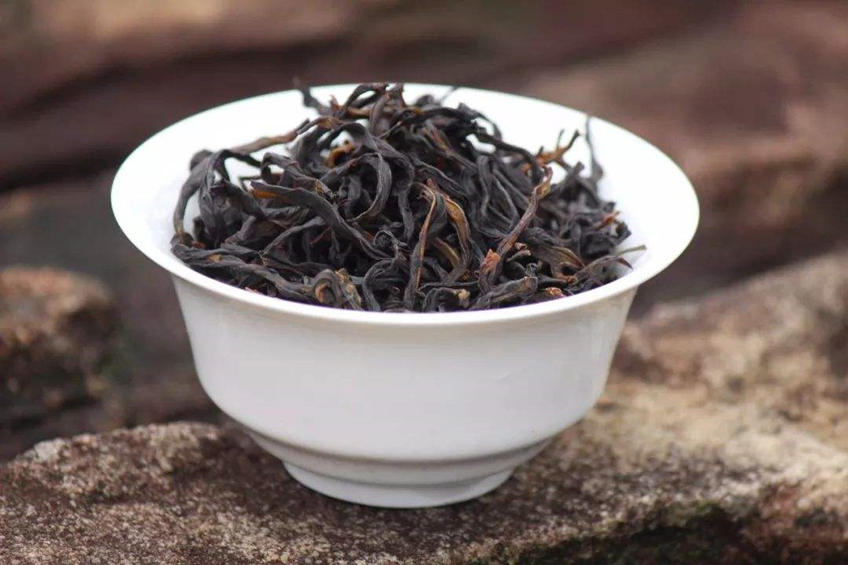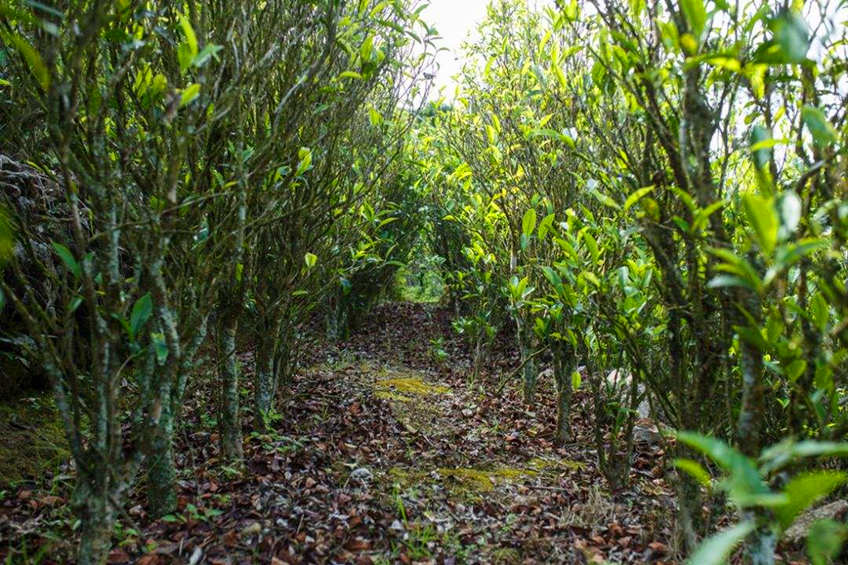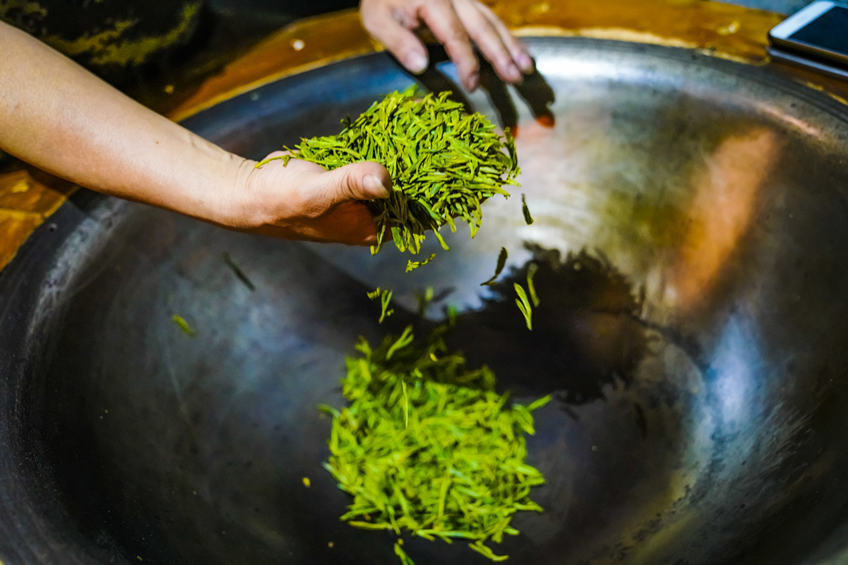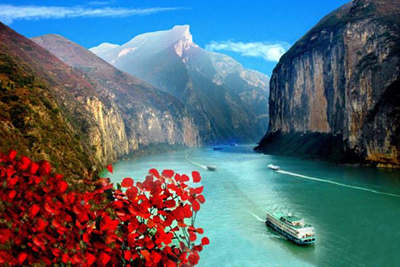China Fenghuang Dancong (Phoenix Oolong Tea)
Possibly the only Oolong tea that is still processed the old fashioned way, Chinese tea Fenghuang Dancong bushes are growing between 500 to 1400 meters above sea level on the SE mountains slopes of Fenghuang (Phoenix) Mountain in Chaozhou City, Guangdong Province, China.
Fenghuang Dancong’s production is very limited due to the tea trees’ unique geographical preferences. Local people discovered Dancong tea trees in the Song Dynasty (960 – 1279) and started to farm it. As the tip of the leaves resembles the shape of bird beak, it is also called "bird beak tea".
The special feature of Dancong tea of China lies in the flavors of tea. According to Wikipedia, "The doppelganger of teas, Dancong teas are noted for their ability to naturally imitate the flavors and fragrances of various flowers and fruits, such as orange blossom, orchid, grapefruit, almond, ginger flower, etc."

China Dancong tea’s special functions includes (in addition to the functions of general tea):
- Reducing the free radicals in the body thus reducing chances of cancer;
- Lowering cholesterol and fatty tissue levels;
- Slowing the aging process;
A Dancong tea dealer once told us that Dancong from old tea trees could dissolve the meat and rice overnight. We did try it out with the rice. 3 leaves of Dancong were brewed in a Gaiwan together with a few cooked rice grains. The next morning I looked at the tea, the rice was gone!
Besides, it's not recommended to drink Dancong tea after dinner. The special effect of Dancong dissolving the food consumed at dinner time will make you very hungry after a few cups. However, that makes it a famous China slim tea and suitable for those looking for Chinese tea to loose weight.
Dancong tea trees
Dancong is a biological term. Dan means Single while Cong is tree or bush. According to Wikipedia, “Dancong refers to the morphology of the tea plant. Most tea bushes emerge from the ground as a cluster of branches; however, the uncommon dan cong variety emerges as a single trunk that branches off higher up the stem.”
After a certain single tea tree is found to carry unique flavors, seeds and branches will be taken off and grown in large scale. Grafting was introduced later to better the quality and diversify the flavor and improve tea trees immunity to natural disasters like extreme temperatures and insects.

Unique features of Chinese Dancong tea
The unique features of Dancong tea lies in its “mountain feel” and “flowery tastes”.
The “mountain feel” or “Shan Yun” comes from the habitat of the tea trees. Untouched by modern world, the mountains are densely wooded with a rich layer of nutritious soil containing various minerals. The rocks are consisted primarily of shale rock which is easily eroded, adding to the mineral contents of the tea. As Fenghuang Mountain is in the monsoon rain zone, the plentiful rainfall, thick layer of soil, and dense woods contribute to the year around water supply.
Fenghuang Dancong tea trees grow between 360m and 1450m above sea level. For those above 600m, the “mountain feel” is quite obvious. The higher the elevation, the stronger the feel.
The flowery tastes come from the various amino acid contents in the tea leaves. These natural flavors of Chinese teas are quite different from the flower teas like jasmine tea.
Different types of China Dancong tea
Dancong is geographically divided into Fenghuang Dancong and Lingtou Dancong. In 1950, grading system was introduced for tea processed in Fenghuang Mountain.
- Fenghuang Dancong (single tree tea processing)
- Fenghuang Langcai (different processing technique. Lang means stirring, and Cai means vegetables. Langcai means stirring vegetables in a wok, used to describe the important process of Dancong tea)
- Fenghuang Shuixian, a general term, though the leaves are less quality than the previous 2.
- Natural flower flavors: 53 different types;
Chinese Dancong tea history
Dancong was farmed more than 900 years ago during the Song Dynasty. The locals found tea trees with leave tip resembling the bird beak and started to farm it with the seeds. According to the legend, one of the last emperors in the Song Dynasty fled the Mongols to Wudong Mountain. After he sampled the tea (emperors always found some sort of entertainment, even during fleeing), he said “this is great!” So later the tea was referred to as Song Tea.
She ethnic tribe people have their origins in Fenghuang Mountain. According to research, She people grew tea much earlier than the Song Dynasty. Their ancestor took the tea farming with them to Zhejiang Province from Fujian Province in the year of 766. So the Oolong in Fujian could also be a She heritage.
By Ming Dynasty, the Dancong was one of the major tea tributes to the royal family, as shown by the government records.
In recent history, Dancong tea received top acclaims:
- Earlier in the 20th century, Fenghuang Shuixian (see above in Different types of Dancong tea) was awarded Silver Medal at Panama Pacific Intenational Exposition.
- In 1986, Fenghuang Dancong was awarded top prize among the 134 different teas of the 5 major teas types in China tea competition;
- In 2002 & 2012, Fenghuang Dancong got gold awards in the International Famous Tea Appraisal Competition;
How Fenghuang Dancong tea is made
It is always interesting to know the process of Chinese tea making.
After the leaves are picked, they will go thru 6 processes: sunlight drying, airing, room temperature oxidation, high temperature oxidation & stabilizing, rolling, machine drying. The most important being the manual oxidation, it involves repeated actions of stirring tea leaves in a bamboo sift. Any negligence or inexperienced worker could downgrade the tea to Langcai or Shuixian.

Tea leaves picking: the 2nd – 5th leaves are chosen. First leave has too much astringent elements and the 6th or 7th leaves have too much fiber, less taste. Picking time is 1300-1600 on a sunny day; Different color, thickness and size of leaves should be stowed in different sift for the next step;
Sunlight drying: immediately following the picking, the drying is in the next 1-2 hours. Evenly distributed in the sift (cannot be overlaid), the tea leaves is exposed to direct sunlight between 1600 and 1800. At temperature of 25 degrees celcius, the drying time is 15-25min.
Airing: this happens indoors. Tea leaves are piled up in the sifts, not exceeding 3cm, stowed on the airing shelves. Higher piles could result in higher temperature and early release of the flavor, not helpful for the quality.
Room Temperature Oxidation (Zuo Qing): this is the most complicated process and requires expertise. Various shaking movements of the sifts result in further oxidation. And between each shaking, specific time should be allowed for the correct flavor of tea to develop. Mostly it is done at night.
High temperature oxidation & stabilizing (Sha Qing): at an temperature of 200 degrees celcius, the tea leaves are thrown into a wok (some machines are used for this) with constant stirring for an even heating of the leaves. This process help finalize the color, fragrance and taste.
Rolling: sometimes done by machine, rolling helps form the final shapes of tea. Extracts of the tea oozes to the surface, creating a luster and contributing to the brewing times.
Drying: mostly done by machine now, this process is further divided to 3 times of drying with decreasing temperature and different drying time. This is another important step.
Storage: it is stored in a dry place. Best in a air tight can. If the humidity of the storage area is high, every other year, it is better to take the tea to the drying machine for a short time of dehydration.
Keep reading:
Suggested China Tea Tours:


